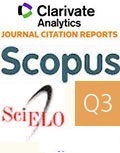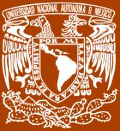Determinación de fases magnéticas en un lago cordillerano de Patagonia Norte, Argentina
Determination of magnetic phases in a Cordillera de los Andes lake in Northern Patagonia, Argentina
María Alicia Irurzun1,*, Claudia Gogorza1, Romina Achaga1, María Martha Bianchi2, Yamila Giaché2
1Centro de Investigaciones en Física e Ingeniería del Centro de la Provincia de Buenos Aires (CIFICEN), Consejo Nacional de Investigaciones Científicas y Técnicas (CONICET), Universidad Nacional del Centro de la Provincia de Bs. As. (UNCPBA), Consejo de Investigaciones Científicas (CIC), Pinto 399, Tandil, 7000, Argentina.
2Instituto Nacional de Antropología y Pensamiento Latinoamericano, Consejo Nacional de Investigaciones Científicas y Técnicas (CONICET) 3 de Febrero 1370,Caba C1426BJN, Argentina
* Autor para correspondencia: (M.A. Irurzun) This email address is being protected from spambots. You need JavaScript enabled to view it.
How to cite this article:
Irurzun, M.A., Gogorza, C., Achaga, R., Bianchi, M.M., Giaché, Y., 2024, Determinación de fases magnéticas en un lago cordillerano de Patagonia Norte, Argentina: Boletín de la Sociedad Geológica Mexicana, 76 (3), A260224. http://dx.doi.org/10.18268/ BSGM2024v76n3a260224
Manuscript received: October 17, 2023; corrected manuscript received: April 12, 2024; manuscript accepted: April 20, 2024.
ABSTRACT
In this work, a detailed analysis of the magnetic composition of the upper meter of sediment from a core from Laguito del Morro, Northern Patagonia, Argentina, was carried out. Measurements of low-frequency magnetic susceptibility, anhysteric remanent magnetization, isothermal remanent magnetization curves (at room temperature), and determination of Curie temperatures were used. Remanence coercivity and different interparametric ratios were calculated. The values obtained for remanence coercivity allowed us to determine three magneto-zones with well-differentiated magnetic mineralogies. The ratio between the isothermal remanent magnetization at -100mT and the saturation magnetization only showed a behavior mirrored by the coercivity in zones I and II. The analysis of the curves at room temperature and the thermal experiments identified magnetite, titanomagnetite, and titanohematite, with magnetite being the main component. The identified zones range from 0 to 16 cm (present 1890 CE)) for zone I, 16 to 66 cm (1890 – 1570 CE) for zone II and 66 to 100 cm (1260 1520 CE) for zone III. Particularly, zone II is framed within the so-called Little Ice Age, so it is expected that the mineralogical variations observed will have a strong climatic component as a cause of the change.
Keywords: Laguito del Morro, paleomagnetology, magnetic methods, remanence coercivity, Little Ice Age.

